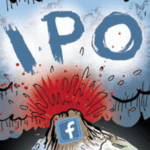 “Data-Driven Thinking” is written by members of the media community and contains fresh ideas on the digital revolution in media.
“Data-Driven Thinking” is written by members of the media community and contains fresh ideas on the digital revolution in media.
Today’s column is written by Vijay Chittoor, CEO at Blueshift.
Innovations in programmatic advertising have transformed online media buying, making the process more automated, targeted and measurable. Now programmatic is poised to revolutionize customer relationship marketing.
Historically, customer relationship marketing has remained decoupled from programmatic techniques because the bar for creating a cohesive narrative for the consumer is much higher in relationship marketing than in advertising. Previous generations of programmatic technology failed the customer relationship marketer by treating every user as an anonymous cookie rather than a real person, while also lacking the tools marketers need to leverage data for creative storytelling.
This is changing with new big data solutions that enable marketers to craft personalized stories for each customer in an automated fashion, using a common identity that ties behavioral data on web and mobile together with first-party customer relationship marketing and transactional data.
Last year, programmatic advertising surpassed 50% of total media spend, as companies like Procter & Gamble saw three to five times greater ROI than traditional media buying environments. The programmatic ad tech ecosystem allows marketers to dynamically segment audiences in real time, using pre-defined attributes. Buyers use real-time bidding to automatically execute auctions for ad inventory according to pre-defined campaign rules. They use can personalize programmatic creative to each segment and target audiences as opposed to inventory. Programmatic advertising is also measurable and auditable, reducing waste and fraud and creating a virtuous feedback cycle to better optimize campaigns.
These approaches are ideally suited to relationship marketing. First-party customer relationship marketing data is already being incorporated into programmatic ad campaigns to deliver greater user personalization. Leveraging that same first-party information for relationship and permission-based marketing is an obvious next step.
The Old Way: Manual And Static
Until now, B2C channels, including email, direct mail, mobile app notifications and text messages, have been largely static. Campaigns have been implemented manually, beginning with a list of recipients pulled from a database. The same creative elements, such as messaging and images, are delivered to everyone at more or less the same time. Inserting the name of each recipient in an email greeting is the most customization consumers are likely to see.
Several days later, the marketer finds that the campaign has performed well, or it hasn’t. Then comes the head scratching as he or she tries to determine which elements worked, which didn’t and for whom. Any resulting “fine-tuning” for future campaigns is often a combination of intuition and further trial and error. It’s not hard to see that there must be a better way.
Programmatic Potential
Some forward-thinking marketers are already experimenting with basic programmatic techniques for email communication, and a study by the Direct Marketing Association shows promising results. Still, this is only the tip of the iceberg as far as the potential of programmatic customer relationship management.
One benefit for customer relationship marketing: no more lists, with audiences updated in real time; inclusion won’t necessarily be all-or-nothing. Instead recipients can form an “engagement cloud” where some consumers receive more frequent communications than others based on their interests and previous interactions with a brand.
Customer relationship marketing could also use real-time triggers to send the right message to the right customer at the right time, based on the customer’s engagement. Receiving an email “blast” in comparison feels exactly like it sounds. No one wants to be caught in a blast radius.
Marketers would be able to use personalized, template-based communication will help prevent consumers from feeling like they’re being talked at rather than to. Overall communication would become user-centric, not channel-centric.
Finally, programmatic would lend customer relationship marketing automatic measurement and optimization capabilities. Marketers should be able to track whether or not they’re connecting with their audiences. Campaigns that can self-optimize, reacting to what is working and what isn’t, will deliver more relevant messages when recipients are most likely to engage.
Marketers will need new tools and capabilities to tap into the potential of programmatic customer relationship marketing. Marketers will need new skill sets, too, as they move beyond static creative elements.
Quality Over Quantity
We don’t expect display ads to speak to us individually any more than we expect the content on web pages to have been created just for us. But relationship marketing is another story. Email, text, mobile alerts and messages are all channels we associate with friends, family and colleagues – people who know us.
When brand interactions arrive over these same channels, we are understandably more sensitive to both the content and the context. Simply put, the bar is set higher, and it’s easier for static marketing messages to feel tone deaf.
Marketers have been substituting quantity for quality, and as a result consumers are now overwhelmed with the number of communications they’re receiving. Bombarding consumers with messages might increase conversions in the short term, but eventually frustrated recipients are more likely to hit the unsubscribe link than reach for their credit card.
Frequency isn’t the answer – context and relevance are. This is where programmatic techniques can help marketers realize the greatest benefit: increasing the signal while reducing the noise. Programmatic technologies can put the “relationship” back in customer relationship marketing by giving consumers more of what they want and less of what they don’t.
Follow Vijay Chittoor (@vijaycs42), Blueshift (@blueshiftlabs) and AdExchanger (@adexchanger) on Twitter.













